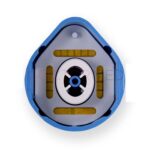The Use of Botulinums To Treat Oily Skin
The word Botox rarely makes us think of a fix for oily skin, does it? But for those who have large pores and greasy noses, Botulinums such as Dysport may be just the solution they need. Studies have proven it to be a safe and effective treatment with hardly any side effects. The Use of Botulinums To Treat Oily Skin
Surely anyone who is contemplating Botulinums for their excess sebum causing acne, will want to research what Botulinums can do for them. Remember, sebum has an important role to play in our skin; it lubricates the stratum corner (outer layer of skin) and has many vital components such as fatty acids, triglycerides and wax esters. Think of it like a waterproof barrier to act as a protective layer against friction.
This protective layer also has many other functions such as:
- carrying antioxidants into the skin
- healing wounds
- creating anti-microbial protection
It’s not just acne sufferers who will consider toxins. People who want to wipe away their greasy T-zone forever will also like to invest in this Botulinum. Sufferers of greasy skin know the problem only worsens over the course of the day and there’s often lots of factors contributing to it, such as genetics, increased hormone levels and adolescence.
When topical medicines and laser have produced no desirable results, Isotretinoin can minimise the secretion of sebum whilst reducing the size of the sebaceous glands. Botulinum Toxin A or B are known to block transmission of acetylcholine, stopping its binding action and thus creating relaxed muscles, but how it works in sebum reduction is not quite known yet, but it could be linked to the same acetylcholine. Studies using Dysport however have been proven to be effective in treating oily skin, where there was a reduction within 0.5 cm of every area that was injected.









